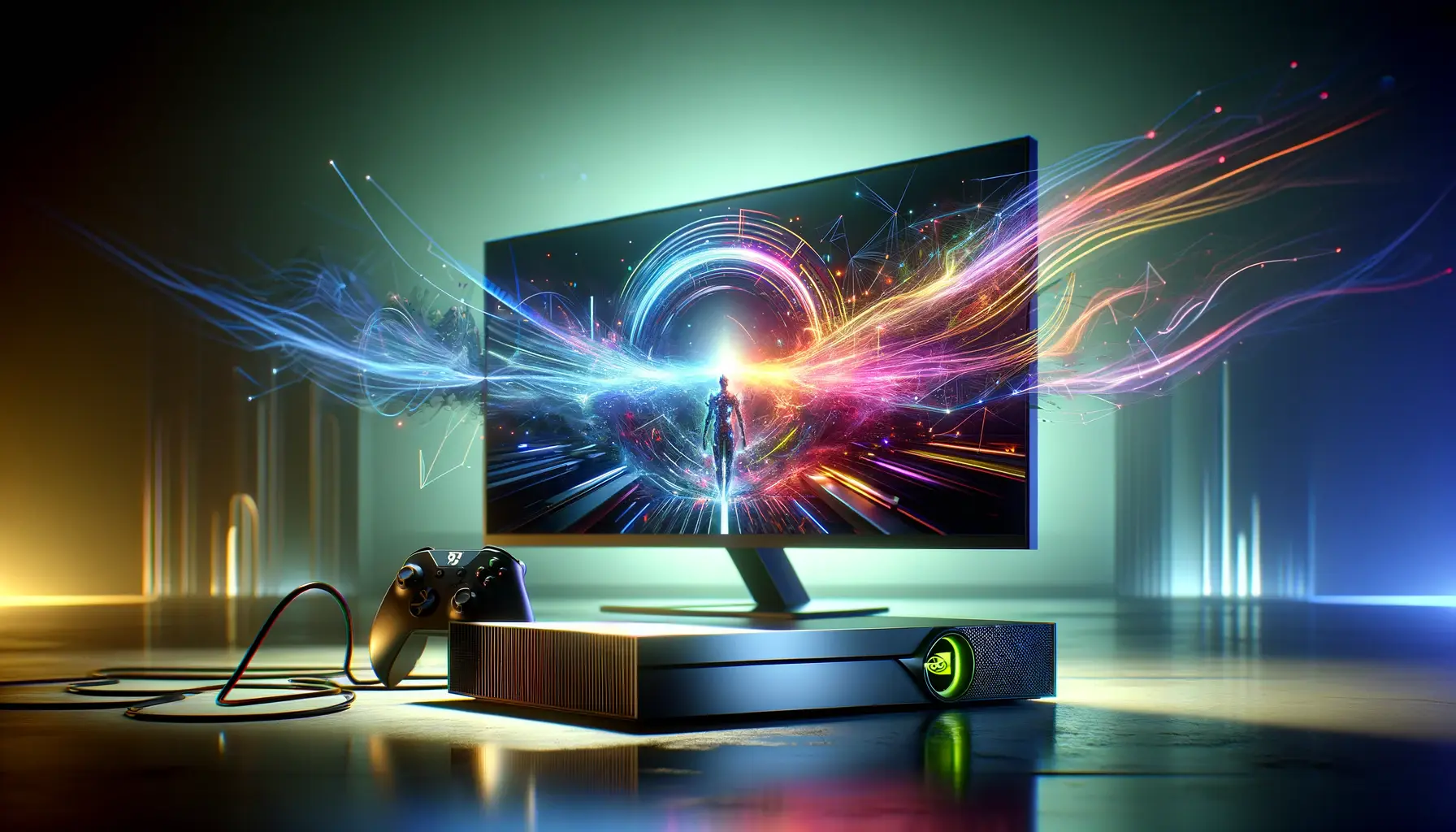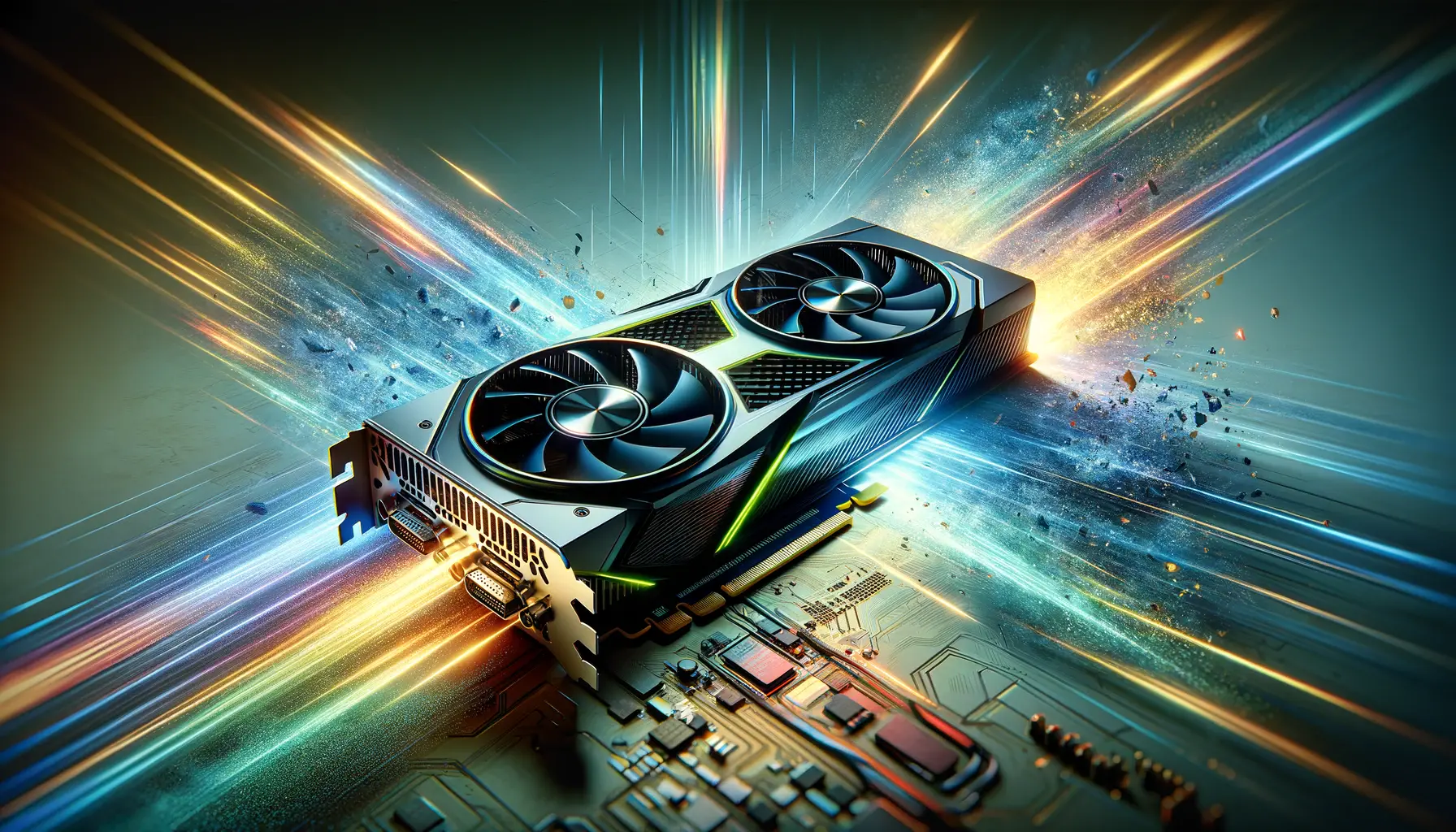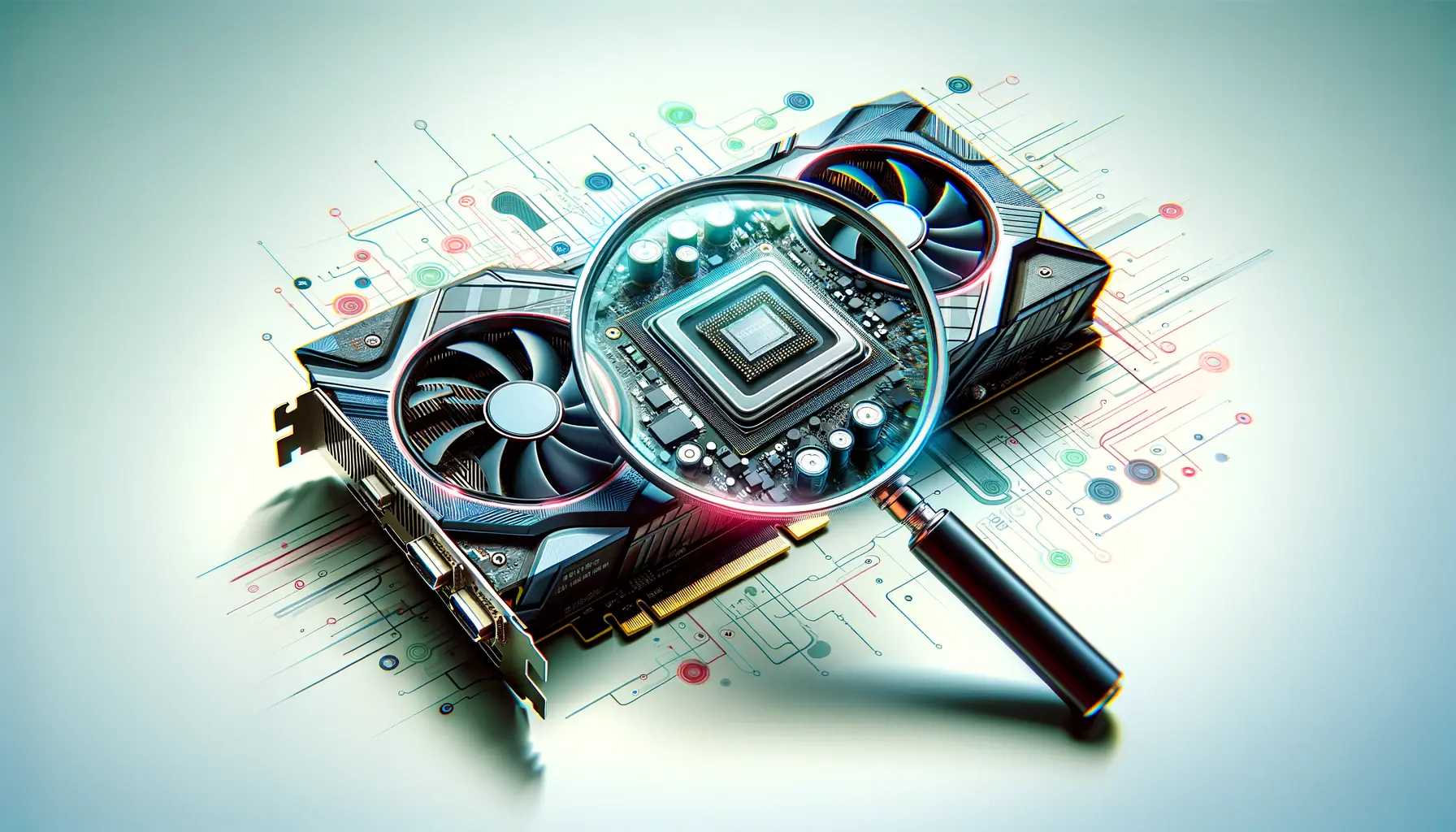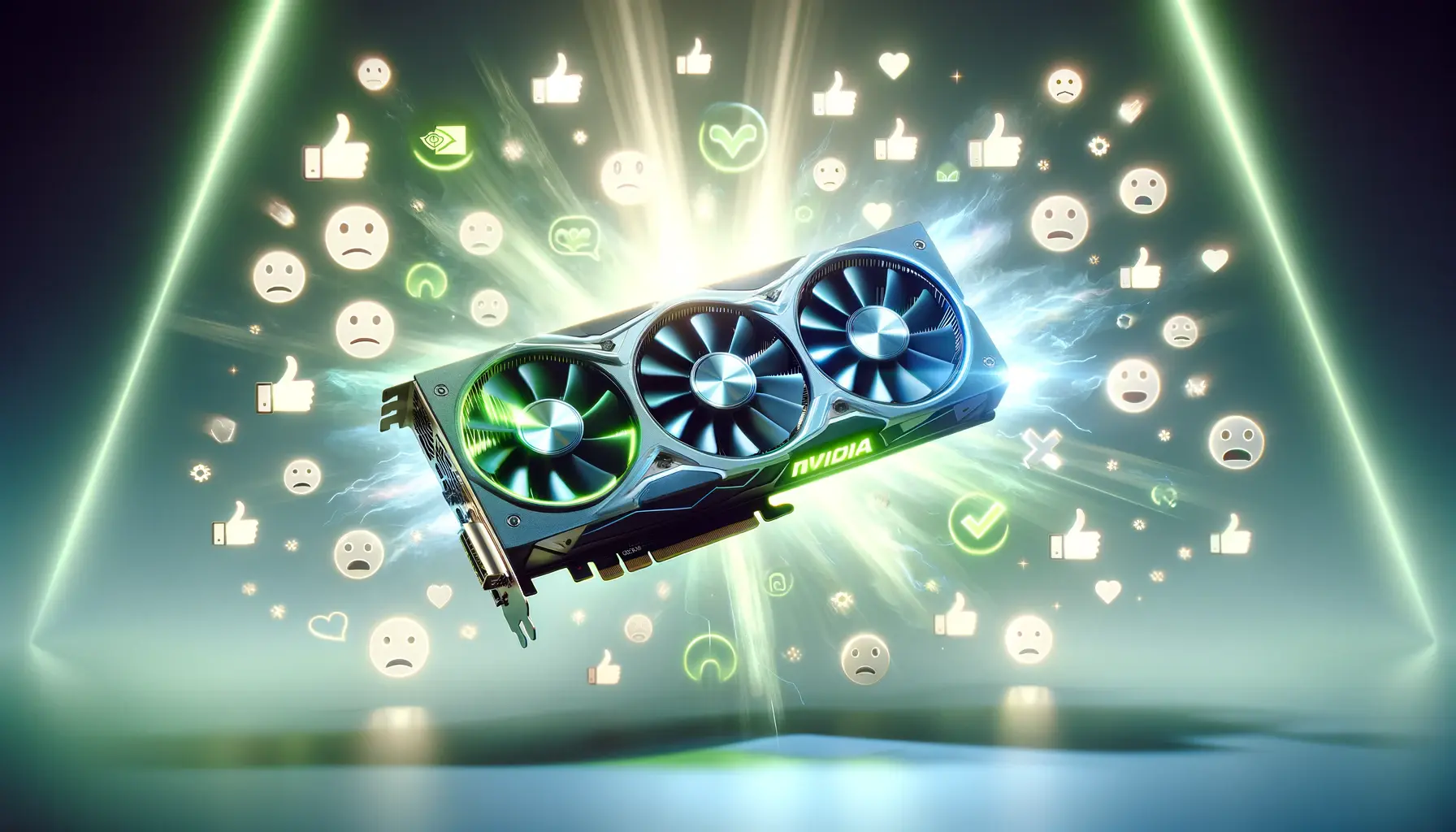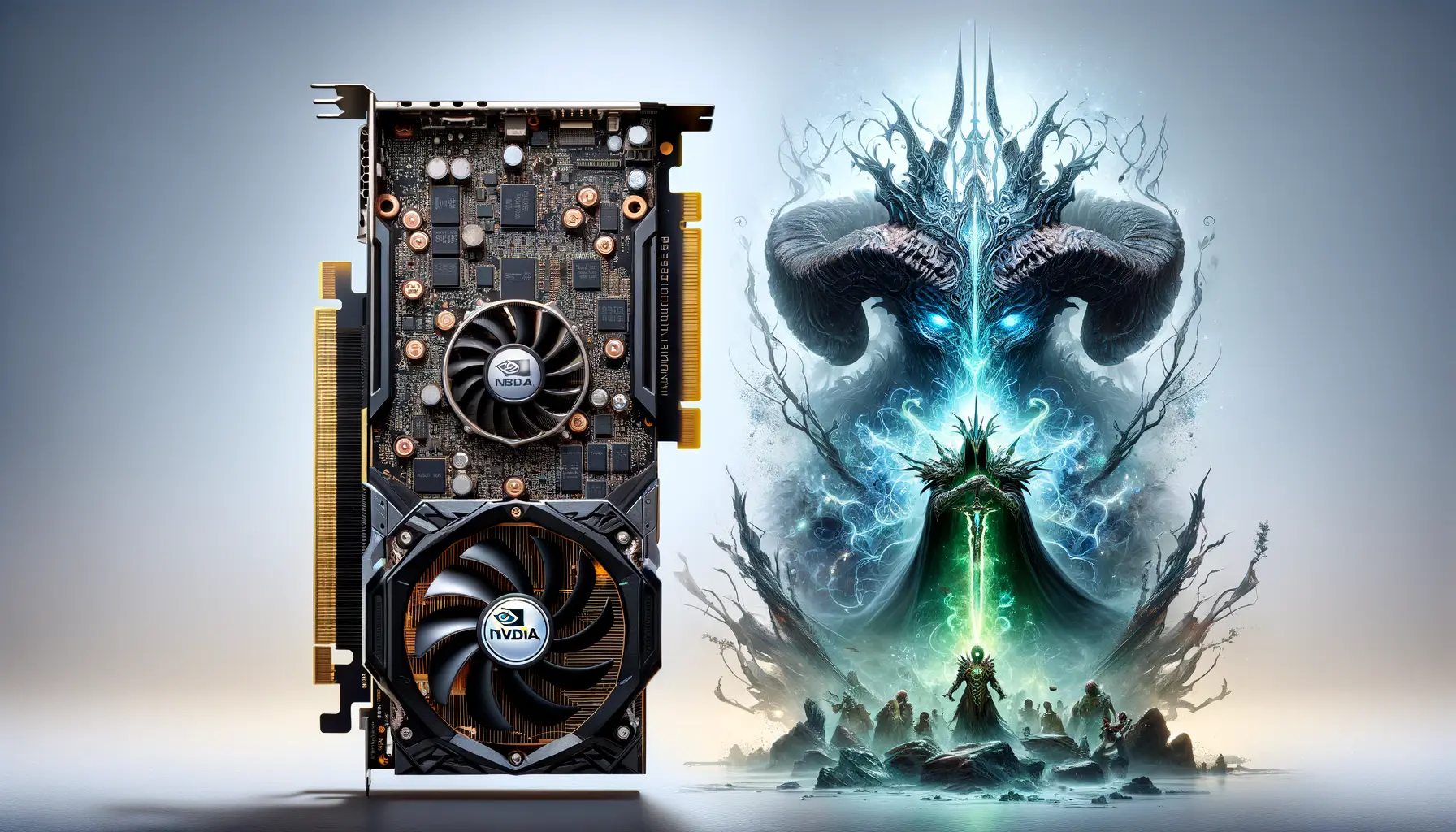The gaming industry is on the cusp of a significant transformation, thanks to the advent of NVIDIA’s Deep Learning Super Sampling (DLSS) 3 future technology.
This groundbreaking innovation is poised to redefine the visual fidelity and performance of video games, heralding a new era where the boundaries between virtual and reality blur.
NVIDIA DLSS 3, the latest iteration in the DLSS series, leverages artificial intelligence and machine learning to deliver unparalleled image quality and fluid frame rates, even on the most demanding titles and hardware configurations.
At the heart of NVIDIA DLSS 3 is its ability to intelligently upscale images in real-time, allowing gamers to experience their favorite titles in stunning detail without compromising on performance.
This is achieved through a sophisticated AI network that has been trained on a vast array of high-quality game footage.
By analyzing and understanding the nuances of each frame, DLSS 3 can generate high-resolution images from lower-resolution inputs, effectively boosting frame rates while maintaining, or even enhancing, the visual quality.
- Introduction to NVIDIA DLSS 3
- The Impact of DLSS 3 on Game Development
- DLSS 3 and the Future of Gaming Hardware
- Comparing DLSS 3 with Previous Versions
- DLSS 3 in Action: Real-World Applications
- Challenges and Limitations of DLSS 3
- Exploring the Potential of DLSS 3 Beyond Gaming
- Embracing the Future with NVIDIA DLSS 3
- NVIDIA DLSS 3: Frequently Asked Questions
Introduction to NVIDIA DLSS 3
NVIDIA DLSS 3 represents a significant leap forward in the realm of game rendering technologies.
It’s not just an incremental update but a complete overhaul that introduces the concept of frame generation.
This new feature works by predicting and generating intermediate frames, effectively doubling the perceived frame rate.
The result is a smoother, more immersive gaming experience that was previously thought to be beyond the reach of current hardware.
The implications of DLSS 3 extend beyond just improved frame rates and image quality.
It also means that gamers can now enjoy advanced ray tracing effects without the hefty performance penalty typically associated with them.
Ray tracing, known for its ability to simulate realistic lighting effects, has been a challenging feature to implement in real-time gaming due to its computational demands.
DLSS 3 mitigates this by ensuring that the performance remains fluid, enabling a level of graphical fidelity that sets a new standard for the industry.
How DLSS 3 Enhances Gaming Performance
The core of DLSS 3’s performance enhancement lies in its innovative use of AI to not just upscale images, but to intelligently generate new frames.
This process, known as Optical Multi Frame Generation, analyzes consecutive frames and motion vectors to create additional frames.
This not only increases the frame rate but does so in a way that is nearly indistinguishable from native rendering.
The technology is particularly beneficial in scenarios where the CPU is the bottleneck, as it allows for smoother gameplay without additional CPU load.
Another aspect of DLSS 3 that contributes to its performance boost is the use of NVIDIA’s dedicated Tensor Cores.
Found in GeForce RTX GPUs, these cores are specifically designed to handle AI and machine learning tasks efficiently.
By offloading the DLSS 3 processing to these cores, NVIDIA ensures that the main GPU resources are available for other game rendering tasks, thus maximizing overall performance.
DLSS 3 is not just about higher frame rates or sharper images; it’s about enabling a more immersive and responsive gaming experience that was previously unattainable on existing hardware.
The Impact of DLSS 3 on Game Development
The introduction of NVIDIA DLSS 3 is set to have a profound impact on game development, pushing the boundaries of what’s possible in terms of graphical fidelity and performance.
Developers now have the tools to create more detailed and immersive worlds without worrying about the traditional trade-offs between quality and performance.
This section explores how DLSS 3 is influencing game development and what it means for the future of gaming.
Enabling More Complex Visuals
With DLSS 3, game developers can significantly enhance the visual complexity of their games.
This technology allows for the inclusion of more detailed textures, complex geometries, and advanced lighting effects without the fear of causing performance issues.
The ability to maintain high frame rates while pushing the envelope in visual quality opens up new creative possibilities for developers, leading to richer and more immersive game environments.
Reducing Development Constraints
Traditionally, game development has been a balancing act between visual quality and performance.
DLSS 3 alleviates many of these constraints by providing a robust solution to maintain fluid gameplay even in the most graphically intense scenes.
This reduction in constraints means that developers can focus more on the artistic and creative aspects of game design, rather than constantly optimizing for performance.
- Increased Accessibility: DLSS 3 makes high-end gaming more accessible to a wider audience by allowing games to run smoothly on a broader range of hardware. This inclusivity means that more players can experience games as they were intended, without needing to invest in top-tier gaming rigs.
- Future-Proofing Games: As games continue to evolve, DLSS 3 provides a way for developers to future-proof their titles. Games that leverage DLSS 3 can easily adapt to newer hardware, ensuring that they continue to look and perform well for years to come.
- Enhanced Ray Tracing: DLSS 3 works hand-in-hand with ray tracing, a technology known for its realistic lighting, shadows, and reflections. By mitigating the performance impact of ray tracing, DLSS 3 enables developers to more freely incorporate these effects into their games, enhancing realism and immersion.
The adoption of DLSS 3 in game development signifies a shift towards prioritizing both performance and visual quality, ensuring that gamers no longer have to choose between the two.
DLSS 3 and the Future of Gaming Hardware
The synergy between DLSS 3 and gaming hardware is a pivotal aspect of the technology’s impact on the future of gaming.
As DLSS 3 continues to evolve, it not only influences software development but also shapes the direction of gaming hardware innovation.
This relationship between software and hardware is crucial for understanding how gaming experiences will improve over time.
Optimizing Hardware for AI Processing
DLSS 3’s reliance on AI and machine learning algorithms necessitates hardware that is optimized for these tasks.
NVIDIA’s GeForce RTX series, with its dedicated Tensor Cores, is a prime example of how hardware is evolving to accommodate the demands of AI-driven technologies like DLSS 3.
Future generations of gaming hardware are likely to place even greater emphasis on AI processing capabilities, leading to more efficient and powerful systems that can handle increasingly complex computations required by DLSS and similar technologies.
Implications for Console Gaming
While DLSS 3 is currently a feature exclusive to NVIDIA’s PC graphics cards, its benefits present an intriguing prospect for console gaming.
The potential integration of similar AI upscaling technologies in future console hardware could significantly enhance performance and visual fidelity, narrowing the gap between PC and console gaming experiences.
This would allow console gamers to enjoy the same high-quality, immersive experiences without the need for constant hardware upgrades.
- Enhanced Portability: For gaming laptops and handheld devices, DLSS 3 offers the promise of high-end gaming experiences without the bulk and power consumption of traditional gaming hardware. This could lead to lighter, more power-efficient devices that do not compromise on performance.
- Wider Accessibility: By reducing the hardware requirements for running games at high settings, DLSS 3 technology makes advanced gaming experiences more accessible to a broader audience. This democratization of high-quality gaming could expand the gaming market and foster a more inclusive gaming community.
- Support for Virtual Reality: VR gaming, with its high demands on system performance and image quality, stands to benefit significantly from DLSS 3. Improved frame rates and image clarity are crucial for a comfortable and immersive VR experience, potentially accelerating the adoption of VR technology in mainstream gaming.
The evolution of gaming hardware, driven by the demands of AI technologies like DLSS 3, is paving the way for a new era of gaming that is more immersive, accessible, and visually stunning than ever before.
Comparing DLSS 3 with Previous Versions
The evolution of NVIDIA’s DLSS technology has been marked by significant milestones, with each version bringing substantial improvements over its predecessors.
DLSS 3 is no exception, introducing groundbreaking features that set it apart from earlier iterations.
Understanding these advancements is key to appreciating the full potential of DLSS 3 and its impact on gaming.
DLSS 1.0 to DLSS 2.0: A Leap in Quality
DLSS 1.0 was NVIDIA’s initial foray into AI-driven image upscaling, offering improved performance with mixed results in image quality.
The introduction of DLSS 2.0 marked a significant leap forward, addressing many of the quality issues of the first version.
DLSS 2.0 introduced a generalized AI model that could be applied across different games, resulting in sharper images and more consistent performance improvements.
This version laid the groundwork for the AI-driven future of game rendering, demonstrating the potential of machine learning to enhance gaming visuals.
The Revolutionary Step of DLSS 3
DLSS 3 builds upon the successes of DLSS 2.0, introducing the innovative feature of frame generation.
Unlike its predecessors, which focused solely on upscaling images for better performance, DLSS 3 adds the capability to generate entirely new frames.
This advancement significantly boosts perceived frame rates, reducing motion blur and making gameplay feel smoother and more responsive.
The integration of frame generation with the existing upscaling technology represents a revolutionary step forward, offering benefits that extend beyond mere performance improvements to fundamentally enhance the gaming experience.
- Performance: While DLSS 2.0 already provided a substantial boost in performance, DLSS 3 takes this to a new level by effectively doubling the frame rate in many cases, thanks to its frame generation technology.
- Image Quality: DLSS 3 not only maintains the high image quality established by DLSS 2.0 but in many instances, enhances it further by reducing artifacts and improving the clarity of moving objects.
- Compatibility: DLSS 3 extends the benefits of DLSS to a wider range of games and applications, including those that are CPU-bound, by alleviating bottlenecks that previously limited performance.
DLSS 3 represents the culmination of NVIDIA’s efforts to blend AI with graphics rendering, setting a new standard for performance and image quality in gaming.
DLSS 3 in Action: Real-World Applications
The real-world applications of DLSS 3 in gaming are as diverse as they are impressive.
From blockbuster titles to indie gems, developers are leveraging this technology to push the boundaries of what’s possible in terms of graphics and performance.
This section highlights some of the most notable examples of DLSS 3 in action, showcasing the tangible benefits it brings to games and their players.
Enhancing Blockbuster Titles
Major game releases such as “Cyberpunk 2077” and “Fortnite” have implemented DLSS 3 to great effect.
In “Cyberpunk 2077,” a game renowned for its ambitious visual scale and detail, DLSS 3 has been instrumental in enabling smoother gameplay without sacrificing the game’s stunning visual fidelity.
Players can explore the neon-lit streets of Night City with ray tracing enabled, experiencing the game’s immersive world in fluid motion, thanks to the frame generation capabilities of DLSS 3.
Revitalizing Indie Games
DLSS 3 is not just for the heavy hitters; indie developers are also incorporating the technology into their titles.
Games like “The Ascent” and “Loopmancer” benefit from DLSS 3’s performance enhancements, allowing these smaller-scale projects to punch above their weight in terms of graphics and fluidity.
This democratization of high-quality rendering techniques enables indie games to offer experiences that rival those of their bigger-budget counterparts, broadening the scope of what indie games can achieve visually and mechanically.
- Virtual Reality (VR) Enhancements: VR games, which demand high frame rates for a comfortable experience, are seeing significant improvements with DLSS 3. By generating additional frames, DLSS 3 reduces motion sickness and enhances immersion, making VR gaming more accessible and enjoyable.
- Esports and Competitive Gaming: In the realm of esports, where every frame can make a difference, DLSS 3 offers a competitive edge. Games like “Valorant” and “Overwatch 2” utilize DLSS 3 to maintain high frame rates, ensuring that gameplay is as smooth and responsive as possible for competitive players.
- Next-Gen Console Potential: While currently a PC-exclusive technology, the potential for DLSS 3 or similar AI-based upscaling technologies to be adopted in future console hardware could revolutionize console gaming, offering PC-level performance and visuals on home consoles.
The widespread adoption of DLSS 3 across various gaming genres and platforms underscores its versatility and the broad appeal of its benefits to both developers and gamers alike.
Challenges and Limitations of DLSS 3
Despite the significant advancements and benefits brought about by DLSS 3, it is not without its challenges and limitations.
Understanding these hurdles is crucial for both consumers and developers to set realistic expectations and for the technology to continue evolving effectively.
This section delves into some of the key challenges and limitations currently associated with DLSS 3.
Hardware Requirements
One of the primary limitations of DLSS 3 is its hardware requirements.
Currently, DLSS 3 is only supported on NVIDIA’s latest GeForce RTX series GPUs, which can be a barrier for gamers without the latest hardware.
This exclusivity means that the benefits of DLSS 3, including enhanced performance and improved visuals, are not accessible to a significant portion of the gaming community.
As the technology matures, there is hope that it will become more widely available across a broader range of hardware.
Game Support and Integration
Another challenge facing DLSS 3 is the need for game developers to actively integrate the technology into their titles.
While NVIDIA provides tools and support to facilitate this process, the implementation can still require significant resources and development time, particularly for smaller studios.
This can lead to a situation where only select games take full advantage of DLSS 3’s capabilities, limiting its impact on the gaming landscape as a whole.
- Perception and Skepticism: Some gamers and critics have expressed skepticism about the use of AI to generate frames, concerned that it might lead to a loss of fidelity or introduce artifacts. Overcoming this skepticism requires ongoing education and demonstration of DLSS 3’s benefits, as well as continuous improvement of the technology to minimize any potential downsides.
- Optimization and Balancing: Finding the right balance between performance gains and visual quality is an ongoing challenge for developers using DLSS 3. Ensuring that the AI-generated frames are indistinguishable from native rendering requires fine-tuning and optimization, which can vary significantly from game to game.
- Future Compatibility: As gaming hardware and software continue to evolve, ensuring that DLSS 3 remains compatible and effective with future technologies is crucial. This includes adapting to new GPU architectures, gaming consoles, and emerging display technologies like 8K resolution and beyond.
While DLSS 3 represents a significant leap forward in gaming technology, addressing its current challenges and limitations is essential for its continued success and adoption.
Exploring the Potential of DLSS 3 Beyond Gaming
While DLSS 3 has primarily been developed with gaming in mind, its underlying technology holds promise for a wide range of applications beyond the gaming industry.
The potential of AI-driven image enhancement and frame generation extends to fields such as film production, virtual reality, and even scientific visualization.
This section explores the broader implications of DLSS 3’s technology and how it could revolutionize other industries.
Enhancing Film and Animation Production
In the realm of film and animation, DLSS 3 could significantly accelerate rendering times for high-resolution CGI and visual effects.
By applying DLSS 3’s frame generation and upscaling capabilities, studios could achieve smoother animations and more detailed visual effects without the extensive rendering times traditionally required.
This efficiency could enable smaller studios to produce content that rivals the quality of larger, more established companies, democratizing the field of animation and film production.
Revolutionizing Virtual Reality Experiences
Virtual reality (VR) stands to benefit immensely from DLSS 3, particularly in terms of performance and visual clarity.
VR applications, which require high frame rates and resolutions to prevent motion sickness and maintain immersion, could use DLSS 3 to deliver more realistic and comfortable experiences.
This could accelerate the adoption of VR technology in various sectors, including education, training, and entertainment, by making high-quality VR more accessible and enjoyable.
- Scientific Visualization: DLSS 3’s ability to enhance image quality and performance can be applied to the visualization of complex scientific data. Researchers could use DLSS 3 to explore large datasets in greater detail, from astronomical simulations to molecular modeling, making it easier to identify patterns and insights that might be missed at lower resolutions or frame rates.
- Architectural and Engineering Design: In architectural and engineering applications, DLSS 3 could be used to create more detailed and fluid visualizations of designs and models. This would allow architects and engineers to explore their creations in a virtual space more realistically, facilitating better design decisions and client presentations.
- Content Creation and Streaming: For content creators and streamers, DLSS 3 could improve the quality of live and pre-recorded video content. By upscaling and generating frames in real-time, DLSS 3 could make streams and videos appear smoother and more detailed, enhancing the viewer’s experience even on lower-bandwidth connections.
The versatility of DLSS 3’s technology showcases its potential to impact a wide array of industries beyond gaming, offering improvements in efficiency, quality, and accessibility across various forms of digital content creation and consumption.
Embracing the Future with NVIDIA DLSS 3
The journey through the capabilities, impacts, and potential of NVIDIA DLSS 3 reveals a technology that is not just transforming the gaming industry but also poised to influence various other sectors.
As we’ve explored, DLSS 3 stands as a testament to NVIDIA’s commitment to pushing the boundaries of what’s possible in digital rendering, offering a glimpse into a future where the lines between reality and digital representation become increasingly blurred.
The Game-Changing Nature of DLSS 3
Within the gaming world, DLSS 3 has already begun to redefine the standards of performance and visual fidelity.
By enabling games to run at higher frame rates without compromising on image quality, NVIDIA has provided a solution that benefits both developers and gamers alike.
For developers, it opens up new avenues of creativity and innovation, allowing them to craft more immersive and visually stunning gaming experiences.
For gamers, it means smoother, more responsive gameplay across a wider range of hardware, making high-end gaming more accessible to all.
DLSS 3’s Broader Implications
But the influence of DLSS 3 extends far beyond gaming.
Its potential applications in film production, virtual reality, scientific visualization, and more, highlight the technology’s versatility and its capacity to revolutionize how we interact with digital content.
By significantly reducing the computational load required for high-quality rendering, DLSS 3 is setting the stage for more realistic virtual environments, more immersive VR experiences, and more efficient content creation processes across various industries.
- The democratization of high-quality rendering, making it accessible to smaller studios and independent creators.
- Enhanced virtual reality experiences, with the potential to accelerate the adoption of VR in education, training, and entertainment.
- A new horizon for scientific research and visualization, enabling researchers to explore complex datasets in unprecedented detail.
Looking Ahead
As we look to the future, the continued evolution of DLSS 3 and similar technologies will undoubtedly play a pivotal role in shaping the digital landscape.
The challenges and limitations that currently exist present opportunities for growth and improvement, promising even more impressive advancements on the horizon.
As NVIDIA and other innovators continue to refine and expand the capabilities of AI-driven rendering, we can expect to see a new era of digital experiences that are more realistic, immersive, and accessible than ever before.
In conclusion, NVIDIA DLSS 3 is not just a remarkable achievement in the field of graphics rendering; it is a beacon for the future of digital interaction.
By harnessing the power of AI to enhance performance and visual quality, DLSS 3 is paving the way for a future where the potential of digital worlds is limited only by our imagination.
For gamers, creators, and innovators around the globe, the future of gaming with NVIDIA DLSS 3 is bright, promising a journey filled with endless possibilities and unprecedented experiences.
NVIDIA DLSS 3: Frequently Asked Questions
As NVIDIA DLSS 3 reshapes the future of gaming, questions abound regarding its capabilities, requirements, and impact. Here are answers to some of the most frequently asked questions about this game-changing technology.
NVIDIA DLSS 3 is an AI-driven rendering technology that enhances game performance and visual quality by intelligently generating frames and upscaling images.
DLSS 3 is supported exclusively on NVIDIA GeForce RTX 40 Series GPUs, leveraging their advanced AI processing capabilities.
DLSS 3 boosts gaming performance by generating additional frames and upscaling images, significantly increasing frame rates without compromising image quality.
DLSS 3 requires game-specific integration. While its adoption is growing, it’s currently available in select titles that have partnered with NVIDIA.
Yes, DLSS 3 works on laptops equipped with GeForce RTX 40 Series GPUs, offering significant performance improvements in supported games.
DLSS 3 is highly beneficial for VR gaming, providing smoother frame rates and enhanced image quality for a more immersive VR experience.
DLSS 3 introduces frame generation technology, setting it apart from previous versions by offering not just image upscaling but also smoother gameplay through additional frame creation.
Absolutely. DLSS 3 enhances game visuals by providing higher resolution images and smoother frame transitions, leading to a more visually stunning gaming experience.
